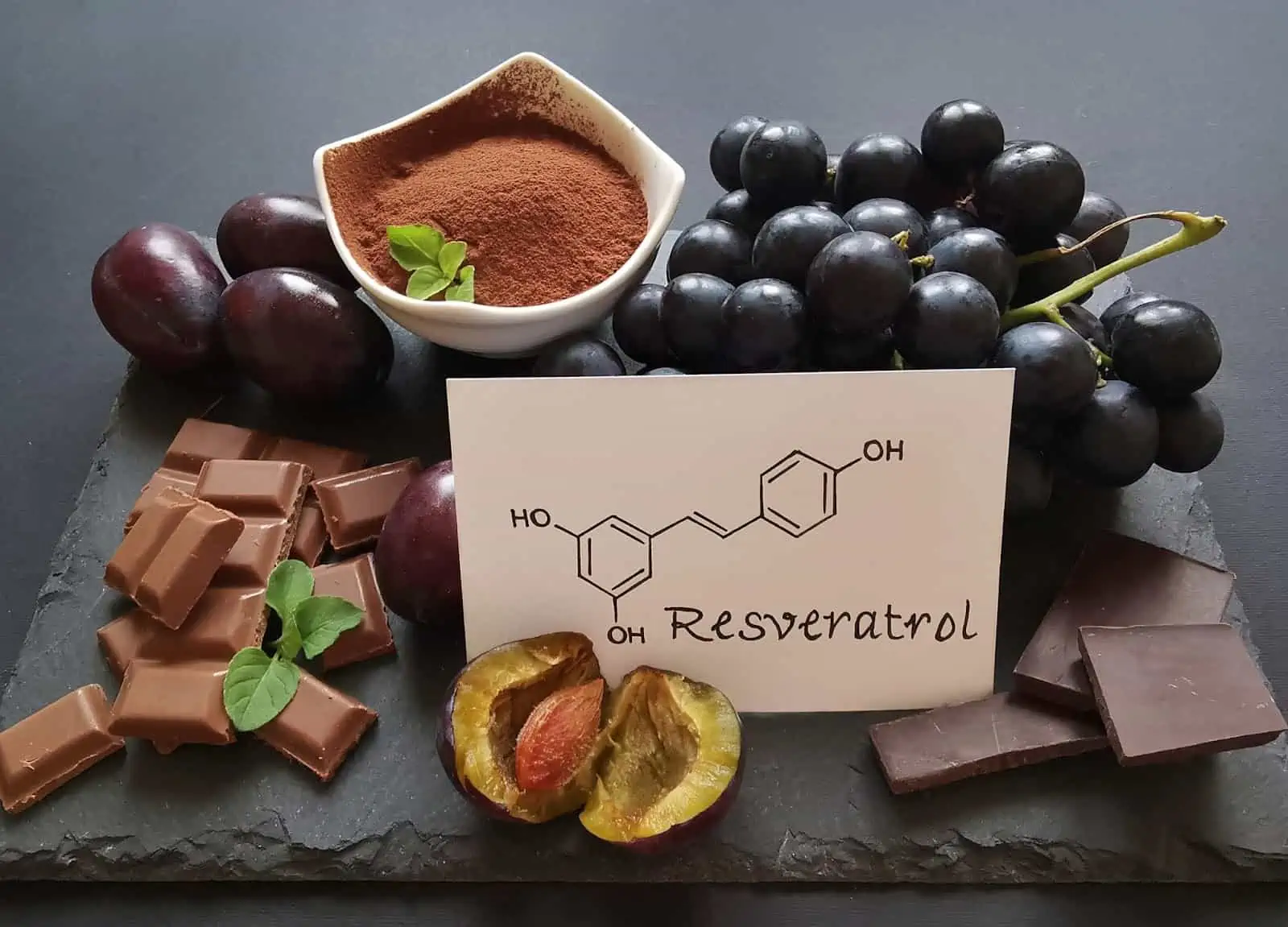by William Clearfield, D.O. for Longevinex
Memory, Cognition, Bone Strength, Endurance, and Weight Control
Introduction-What is Resveratrol?
A polyphenol compound found in grapes, berries, peanuts, red wine, and Japanese knotweed, Resveratrol, the subject of previous articles in our series on the “ideal” supplement (1), exhibits anti-inflammatory, antioxidant, and anti-aging activity. (2-4) Resveratrol protects the body against damage caused by free radicals and reduces the harmful effects of excess androgens, insulin resistance, and chronic degenerative diseases. (5)
With more than three hundred and fifty (350) resveratrol supplements on the market, how does one distinguish the” real McCoy” Resveratrol from the pretenders? Which compound do we choose?
Resveratrol for medicinal purposes comes in two forms. “Cis” Resveratrol, its’ atoms are on the same side of its’ backbone double bond creating a zigzag or bent shape to its structure. “Trans” Resveratrol positions its’ atoms on the opposite side of its double bond.
Trans-Resveratrol is a straighter molecule.
 “Cis” Resveratrol is effective as an anti-inflammatory agent. “Trans”-resveratrol, exhibiting both anti-inflammatory and antioxidant activity, is the more stable, biologically active molecule. (6) We recommend the trans-resveratrol isomer to get all that Resveratrol offers.
“Cis” Resveratrol is effective as an anti-inflammatory agent. “Trans”-resveratrol, exhibiting both anti-inflammatory and antioxidant activity, is the more stable, biologically active molecule. (6) We recommend the trans-resveratrol isomer to get all that Resveratrol offers.
Choose wisely.
Our May 26, 2023, report described fifty (50) ways resveratrol improves health and longevity. We covered the first five: inflammation reduction and improved cholesterol utilization, insulin sensitivity, cardiac preservation, and cancer protection extensively. (6)
50 Ways Resveratrol Improves Health (7)
- Reduces inflammation.
- Improves cholesterol
- Increases insulin sensitivity
- Protects the heart
- Is an anti-cancer agent
- Enhances memory and cognition
- Improves bone strength
- Increased energy and endurance
- Weight loss
- Improves your skin
- Protects against ultraviolet radiation
- Protects against macular degeneration
- Improves liver function
- Lowers cholesterol
- Protects against atherosclerosis
- Protects the brain/decreases CVA risk
- Reduces the incidence of diabetes
- Enhances the immune system
- Protects against infections
- Improves respiratory function
- Reduces reactive oxidative stress,
- Improves sleep
- Helps alleviate anxiety
- Helps alleviate depression
- Reduces joint pain.
- Improves muscle strength
- Aids in erectile dysfunction
- Protects the brain from neurodegenerative diseases, Alzheimer’s, and Parkinson’s Disease
- Increases longevity
- Protects the Gut
- Protects against foodborne illnesses
- Reduces asthma
- Lessens autoimmune disease symptoms
- Protects the liver
- Protects the kidney
- Lessens menopause symptoms
- Improves fertility
- Can strengthen your teeth and gums
- It is an anti-viral agent
- Reduces arthritis
- Improves ADHD symptoms
- Improves your lung function
- Protects the skin against cancer
- Improves insulin resistance
- Reduces the risk of heart disease
- Reduces the risk of dementia
- Reduces the risk of obesity
- Balances estrogen
- Reduces chronic fatigue syndrome
- Reduces the risk of and improves the outcomes of migraine headaches
In this exciting article “50 Ways Resveratrol Improves Your Health,” (part 2) we explore items six through nine, Resveratrol’s effect on memory and cognition, bone strength, endurance, and weight control.
Memory and Cognition
In addition to its well-documented, potent antioxidant and anti-inflammatory properties, Trans-Resveratrol is neuroprotective, actively combating age-related cognitive decline. (8
200 mg per day of Trans-Resveratrol enhances memory, attention, language, and cognition by increasing blood flow to the brain. (9-10) Increasing essential nutrients and oxygen to the cerebral nervous system enhances cognitive function. (11) Trans-Resveratrol activates the expression of brain-derived neurotrophic factor (BDNF), supporting the growth and maintenance of brain cells. (12) It also inhibits Alzheimer’s disease-associated beta-amyloid plaque formation. (13)
Bone Health
Characterized by decreased bone density and increased bone fragility, osteoporosis affects 200 million people worldwide. Osteoporosis is a significant cause of morbidity and mortality in both andropausal and postmenopausal women. (14) One-year hip fracture postoperative mortality is 27.3%; in three years, 79.0% perish! (15)
The primary cause of bone loss in women is the decline in estrogen in the postmenopausal era. Similarly, the gradual decline of testosterone levels and subsequent loss of estrogen in men, as testosterone aromatizes to estradiol, contributes to the development of osteoporosis. (16) (Surprise sports fans: Men need a little estrogen; women need some testosterone.) (17) Bone loss increases susceptibility to fractures, particularly in the spine, hips, and wrists.
Preventive measures in this age group include weight-bearing exercises, avoiding smoking, limiting alcohol, ingesting green leafy vegetables, dairy products high in calcium, fatty fish, and egg yolks, and supplementing an adequate amount of calcium and vitamin D. (A typical Calcium/Vitamin D3 dose is 600 mg/400 IU twice daily, respectively.) (18)
Medical interventions to prevent or treat osteoporosis available include hormone replacement therapy, bisphosphonate drug interventions, SERMS) estrogen-like modulators such as Evista), calcitonin nasal spray, and denosumab (Prolia), an injectable that inhibits the activity of cells that break down bone. (19)
Unfortunately, we must deal with many side effects, warnings, and contraindications to these medical therapies. So, as we have in the past, we turn to the plant kingdom to help make a difference. (20)
Guess who turns up front and center: our old pal, Trans-Resveratrol. (21) (You thought I would say ‘Ovaltine? You remember Ovaltine, don’t you?
Look here: https://youtu.be/Q2Fkiqae4no)
Trans-Resveratrol increases the number of cells responsible for bone formation (osteoclasts) and reduces the activity of cells that promote bone loss (osteoblasts). Usually, we lose this “tug of war,” resulting in bone loss due to the above-noted factors that accumulate with aging. Resveratrol tips the balance in favor of preserving and increasing bone density. (22)
Trans-Resveratrol’s bone-strengthening activity is due to its estrogenic, anti-inflammatory, and anti-oxidative properties. (23) Doses, typically 250-500 mg., but as low as 75 mg., twice daily, increased lumbar spine density by 1.5% and a reduction in the bone resorption marker CTX by 7.2%. This bone-preserving compound corresponds to a reduction in new osteoporotic fractures by 49%. (24)
Paradoxically, Trans-Resveratrol is more effective in those with poorer bone health than those with relatively intact skeletal frames. (25) It is well known that adequate Vitamin D and calcium supplementation preserves bone density by up to 30%. Vitamin D significantly amplifies the absorption of Resveratrol within the first 2 minutes of administration. Studies note a 34% increase in serum Resveratrol levels versus Resveratrol alone. The maximum effect of Vitamin D on Resveratrol occurs at 5 min with a 220% increase in RSV compared to Resveratrol alone. (26-27)
Increased Endurance
Trans-Resveratrol stimulates SIRT 1, a protein that is pivotal in regulating cellular processes, gene expression, metabolism, DNA repair, neuroprotection, and aging. SIRT 1 proteins activate mitochondrial biogenesis. (28-29)
Mitochondria are the “powerhouses” of the cell. Mitochondrial dysfunction is a significant cause of chronic fatigue and all energy disruptions in the body. (30) Nurturing, preserving, and generating mitochondrial energy improves energy reserve.
Trans-Resveratrol and exercise training enhance mitochondrial function while reducing aged-related mitochondrial dysfunction. (31) Endurance parameters improve as Resveratrol use yields a more efficient energy supply for working muscles. (32)
Trans-Resveratrol activates adenosine monophosphate-activated kinase (AMPK), an enzyme that preserves and increases red blood cell capacity. (33 ) Increasing red blood cell density increases oxygen-carrying capacity resulting in improved energy, wind, exercise tolerance, and physical endurance. (34)
Trans-resveratrol’s effect on AMPK occurs due to its ability to inhibit phosphodiesterase.
(35) Phosphodiesterase inhibitors, among other actions, stimulate cAMP and CGMP, messenger enzymes involved with numerous metabolic functions. The most famous of the phosphodiesterase inhibitors are the PDE5 family, which includes sildenafil and tadalafil, trade named Viagra and Cialis.
Everyone knows exercise benefits the heart, lungs, muscles, brain, and overall well-being. Exercise creates “good” stress involving multiple metabolic processes. Overexercise overutilizes nutrients and can tax various tissues, creating harmful free radicals and triggering the inflammatory cascades we call this “oxidative stress.”
Our favorite antioxidant, Trans-resveratrol, neutralizes free radicals, reduces inflammation, mitigates fatigue, and promotes faster recovery from physical activity, i.e., it reduces oxidative stress. (36)
Similar to those on a ketogenic diet, Trans-resveratrol also improves endurance by shunting the body’s energy utilization from glucose to fat. (37) Increased fat oxidation increases energy capacity and delays fatigue. (38)
With all of its positive effects on endurance, enhanced mitochondrial function, increased red blood cell density and oxygen carrying capacity, reduced oxidative stress, and increased fat utilization, it is no surprise that regular usage of Trans-resveratrol improves cardiovascular health. (39)
Doses to reduce fatigue and improve endurance are 250-500 mg daily. (40)
Weight Loss
Obesity is a multi-systemic and multi-factorial condition with initial presentations of high body weight and waist circumference and complex co-morbidities of high blood pressure, insulin resistance, diabetes, cardiovascular disease, metabolic syndrome, fatty liver disease, and cancers. (41)
Reviewing all that we learned about Trans-resveratrol, from reductions in inflammation, lipid parameters, and oxidative stress to improvements in blood flow, oxygen-carrying capacity, insulin sensitivity, and cardiac protection, we naturally wondered, can this superstar molecule aid in weight loss?
A randomized trial after 500 mg resveratrol administration three times daily for 90 days revealed a significant 12.7% annualized difference in total weight, 14.4% annualized drop in body mass index (BMI), 23.2% lowering of fat mass, and a 14.6% annualized reduction in waist circumference (WC). Insulin levels and insulinogenic index decreased by 45.3% and 41.7%, respectively. (42)
Like Resveratrol, cis, and trans, there are two kinds of fat, white (WAT) and brown (BAT). White adipose tissue (WAT) accumulates in an imbalance of caloric intake and energy expended. Brown adipose tissue (BAT) dissipates energy resulting in heat production.
From a weight reduction perspective, activating brown fat and “browning” white fat increases energy consumption, controls glucose, and lipid metabolism, burns fat, increases metabolic rate, and promotes negative energy balance leading to weight stabilization and weight loss. (43)
Lifestyle activities that convert white fat to brown fat include cold exposure (cold showers or environment), exercise, aerobic and strength training, adequate sleep, a healthy diet, and stress reduction techniques. (44)
Medical and supplemental interventions that convert white to brown fat to increase thermogenesis and energy expenditure include:
- A combination of β3-Adrenergic agonists (mirabegron) and metformin. (45)
- Mirabegron (trade name Myrbetriq) is FDA-approved for overactive bladder.
- Metformin is the leading first-line anti-diabetes medication in the world.
- Both Mir and Meg convert white fat to brown fat.
- Mirabegron administration resulted in an 11% decrease in body weight.
- Met alone resulted in a 4 % decrease in body weight.
- A Mir/Meg combination resulted in a greater-than-expected 17% decrease in body weight.
- Energy expenditures tripled with the Mir/Meg combo versus each drug individually.
- Thermogenesis doubled versus single medication alone.
- Metformin exhibited little ability to convert white to brown fat independently.
- Mirabegron increased fat browning one-fold.
- Combining Mir/Meg doubled fat browning versus Mir alone.
- Subjects showed improvement in glucose utilization with no apparent cardiovascular side effects. (46)
- The hormone irisin converts white fat to brown fat. Irisin increases with (47):
- High-fat diet
- Exercise (resistance training and HIIT induce the most irisin)
- Extreme Temperatures-Shivering (extreme cold) or sauna (extreme heat)
- Hormones: Leptin and Growth Hormone
- CoEnzyme Q10
- Holy Basil
- Metformin
- Whole-Body Vibration
- Capsaicin
- Adequate thyroid hormone levels.
- Catecholamines adrenaline and noradrenaline.
- PPaRγ agonists-The diabetes drugs Pioglitazone (Actos) and Rosiglitazone (Avandia).
- Melanotan II peptides.
- Our old friend Trans-Resveratrol
Summary of Trans-Resveratrol vs. Obesity Mechanism of Action (48)
- Trans-Resveratrol activates brown fat and “browns” white fat.
- Trans-Resveratrol activates the SIRT1 protein enhancing metabolism, increasing energy expenditure, and burning fat.
- Trans-Resveratrol activates the AMPK pathway.
- Trans-Resveratrol acts on ghrelin and leptin, the “hunger” and “satiety” hormones.
- Trans-Resveratrol improves exercise performance/endurance by utilizing fat as fuel during exercise.
Dosing Schedule
Memory and Cognition: 200 mg/day
Bone Health: 250-500 mg/day Add: Calcium/Vitamin D 600 mg/400 IU 2x/d
Endurance/Fatigue: 250-500 mg/day
Weight Loss: 500 mg three times/day Add: mirabegron/metformin 100 mg/1000 mg/d (49)
Conclusion
Resveratrol is the superstar supplement in the anti-aging, anti-inflammatory, and antioxidant world. This week we explored the difference between the potent “trans” Resveratrol and its weaker “cis” isomer.
Next, we uncovered Resveratrol’s memory and cognition, bone strengthening, endurance enhancing, and weight-controlling properties. And that is just the tip of the resveratrol iceberg. We have forty-one (41) more ways to go.
In the next installment of “50 Ways Resveratrol Improves Health,” we share its multifaceted effects on the skin, eyes, liver, and cardiovascular system. Join us to unlock more of the potential of this powerhouse compound further.
Hopefully, Teddy will be back with his unique worldly insights.
Sincerely,
Dr. Bill Clearfield
References
- https://longevinex.com/articles/
- Koushki, M., Amiri-Dashatan, N., Ahmadi, N., Abbaszadeh, H. A., & Rezaei-Tavirani, M. (2018). Resveratrol: A miraculous natural compound for disease treatment. Food science & nutrition, 6(8), 2473–2490. https://doi.org/10.1002/fsn3.855
- Koushki, M., Amiri-Dashatan, N., Ahmadi, N., Abbaszadeh, H. A., & Rezaei-Tavirani, M. (2018). Resveratrol: A miraculous natural compound for disease treatment. Food science & nutrition, 6(8), 2473–2490. https://doi.org/10.1002/fsn3.855
- Salehi, B., Mishra, A. P., Nigam, M., Sener, B., Kilic, M., Sharifi-Rad, M., Fokou, P. V. T., Martins, N., & Sharifi-Rad, J. (2018). Resveratrol: A Double-Edged Sword in Health Benefits. Biomedicines, 6(3), 91. https://doi.org/10.3390/biomedicines6030091
- https://supplements.selfdecode.com/blog/top-15-scientific-health-benefits-of-resveratr ol-with-references/
- Meng T, Xiao D, Muhammed A, Dengresveratrol’s Chen L, He J. Anti-Inflammatory Action and Mechanisms of Resveratrol. Molecules. 2021 Jan 5;26(1):229. doi: 10.3390/molecules26010229. PMID: 33466247; PMCID: PMC7796143.
- Clearfield, W., https://longevinex.com/50-ways-resveratrol-improves-health-discover-the-benefits-of-reresveratrol/ May 26, 2023.
- Rahman MH, Akter R, Bhattacharya T, Abdel-Daim MM, Alkahtani S, Arafah MW, Al-Johani NS, Alhoshani NM, Alkeraishan N, Alhenaky A, Abd-Elkader OH, El-Seedi HR, Kaushik D, Mittal V. Resveratrol and Neuroprotection: Impact and Its Therapeutic Potential in Alzheimer’s Disease. Front Pharmacol. 2020 Dec 30;11:619024. doi 10.3389/fphar.2020.619024. PMID: 33456444; PMCID: PMC7804889.
- Cicero AFG, Ruscica M, Banach M. Resveratrol and cognitive decline: a clinician perspective. Arch Med Sci. 2019 Jul;15(4):936-943. doi 10.5114/aoms.2019.85463. Epub 2019 Jun 19. PMID: 31360188; PMCID: PMC6657254.
- Thaung Zaw JJ, Howe PRC, Wong RHX. Sustained Cerebrovascular and Cognitive Benefits of Resveratrol in Postmenopausal Women. Nutrients. 2020 Mar 20;12(3):828. doi: 10.3390/nu12030828. PMID: 32244933; PMCID: PMC7146200.
- Evans HM, Howe PR, Wong RH. Effects of Resveratrol on Cognitive Performance, Mood and Cerebrovascular Function in Postmenopausal Women; A 14-Week Randomised Placebo-Controlled Intervention Trial. Nutrients. 2017 Jan 3;9(1):27. doi: 10.3390/nu9010027. PMID: 28054939; PMCID: PMC5295071.
- Song J, Cheon SY, Jung W, Lee WT, Lee JE. Resveratrol induces the expression of interleukin-10 and brain-derived neurotrophic factors in BV2 microglia under hypoxia. Int J Mol Sci. 2014 Sep 2;15(9):15512-29. doi: 10.3390/ijms150915512. PMID: 25184950; PMCID: PMC4200860.
- Karuppagounder SS, Pinto JT, Xu H, Chen HL, Beal MF, Gibson GE. Dietary supplementation with Resveratrol reduces plaque pathology in a transgenic model of Alzheimer’s disease. Neurochem Int. 2009 Feb;54(2):111-8. doi: 10.1016/j.neuint.2008.10.008. Epub 2008 Nov 8. PMID: 19041676; PMCID: PMC2892907.
- Achner TD, Khosla S, Hofbauer LC. Osteoporosis: now and the future. The Lancet. 2011;377(9773):1276–1287.
- Panula, J., Pihlajamäki, H., Mattila, V.M. et al. Mortality and cause of death in hip fracture patients aged 65 or older – a population-based study. BMC Musculoskelet Disord 12, 105 (2011). https://doi.org/10.1186/1471-2474-12-105
- Golds G, Houdek D, Arnason T. Male Hypogonadism and Osteoporosis: The Effects, Clinical Consequences, and Treatment of Testosterone Deficiency in Bone Health. Int J Endocrinol. 2017;2017:4602129. doi: 10.1155/2017/4602129. Epub 2017 Mar 16. PMID: 28408926; PMCID: PMC5376477.
- https://navacenter.com/male-and-female-testosterone-the-facts/#:~:text=Ideally%2C%2 0adult%20male%20testosterone%20levels,100%2D200%20ng%2FdL.
- Nowson CA. Prevention of fractures in older people with calcium and vitamin D. Nutrients. 2010 Sep;2(9):975-984. doi: 10.3390/nu2090975. Epub 2010 Sep 16. PMID: 22254066; PMCID: PMC3257715.
- Kling JM, Clarke BL, Sandhu NP. Osteoporosis prevention, screening, and treatment: a review. J Womens Health (Larchmt). 2014 Jul;23(7):563-72. doi: 10.1089/jwh.2013.4611. Epub 2014 Apr 25. PMID: 24766381; PMCID: PMC4089021.
- Skjødt MK, Frost M, Abrahamsen B. Side effects of drugs for osteoporosis and metastatic bone disease. Br J Clin Pharmacol. 2019 Jun;85(6):1063-1071. doi: 10.1111/bcp.13759. Epub 2018 Oct 17. PMID: 30192026; PMCID: PMC6533454.
- Mizutani K, Ikeda K, Kawai Y, Yamori Y. Resveratrol stimulates the proliferation and differentiation of osteoblastic MC3T3-E1 cells. Biochem. Biophys. Res. Commun. 1998;30(253):859–863.
- Ahmad Hairi H, Jayusman PA, Shuid AN. Revisiting Resveratrol as an Osteoprotective Agent: Molecular Evidence from In Vivo and In Vitro Studies. Biomedicines. 2023 May 16;11(5):1453. doi: 10.3390/biomedicines11051453. PMID: 37239124; PMCID: PMC10216404.
- Tou, J. C. (2015). Resveratrol supplementation affects bone acquisition and osteoporosis: Pre-clinical evidence toward translational diet therapy. Biochimica et Biophysica Acta (BBA) – Molecular Basis of Disease, 1852(6), 1186-1194. https://doi.org/10.1016/j.bbadis.2014.10.003
- Wong RH, Thaung Zaw JJ, Xian CJ, Howe PR. Regular Supplementation With Resveratrol Improves Bone Mineral Density in Postmenopausal Women: A Randomized, Placebo-Controlled Trial. J Bone Miner Res. 2020 Nov;35(11):2121-2131. doi: 10.1002/jbmr.4115. Epub 2020 Jul 14. PMID: 32564438; PMCID: PMC7689937.
- Ibid
- Guo C, Sinnott B, Niu B, Lowry MB, Fantacone ML, Gombart AF. Synergistic induction of human cathelicidin antimicrobial peptide gene expression by vitamin D and stilbenoids. Mol Nutr Food Res. 2014;58(3):528–3
- Uberti F, Morsanuto V, Aprile S, Ghirlanda S, Stoppa I, Cochis A, Grosa G, Rimondini L, Molinari C. Biological effects of combined Resveratrol and vitamin D3 on ovarian tissue. J Ovarian Res. 2017 Sep 15;10(1):61. doi: 10.1186/s13048-017-0357-9. PMID: 28915830; PMCID: PMC5602920.
- Iside C, Scafuro M, Nebbioso A, Altucci L. SIRT1 Activation by Natural Phytochemicals: An Overview. Front Pharmacol. 2020 Aug 7;11:1225. doi: 10.3389/fphar.2020.01225. PMID: 32848804; PMCID: PMC7426493.
- Manjula, R., Anuja, K., Alcain, F., SIRT1 and SIRT2 Activity Control in Neurodegenerative Diseases. Front. Pharmacol., Jan 12, 2021, Sec. Neuropharmacology Volume 11 – 2020 | https://doi.org/10.3389/fphar.2020.585821
- Nicolson GL. Mitochondrial Dysfunction and Chronic Disease: Treatment With Natural Supplements. Integr Med (Encinitas). 2014 Aug;13(4):35-43. PMID: 26770107; PMCID: PMC4566449.
- Baltaci SB, Mogulkoc R, Baltaci AK. Resveratrol and exercise. Biomed Rep. 2016 Nov;5(5):525-530. doi: 10.3892/br.2016.777. Epub 2016 Oct 11. PMID: 27882212; PMCID: PMC5103661.
- Joseph AM, Malamo AG, Silvestre J, Wawrzyniak N, Carey-Love S, Nguyen LM, Dutta D, Xu J, Leeuwenburgh C, Adhihetty PJ. Short-term caloric restriction, Resveratrol, or combined treatment regimens initiated in late-life alter mitochondrial protein expression profiles in a fiber-type specific manner in aged animals. Exp Gerontol. 2013;48:858–868. doi: 10.1016/j.exger.2013.05.061.
- Marc Foretz, Soizic Guihard, Jocelyne Leclerc, et., al., maintenance of red blood cell integrity by AMP-activated protein kinase α1 catalytic subunit, FEBS Letters, Volume 584, Issue 16, 2010, Pages 3667-3671, ISSN 0014-5793, https://doi.org/10.1016/j.febslet.2010.07.041.
- Mairbäurl H. Red blood cells in sports: effects of exercise and training on oxygen supply by red blood cells. Front Physiol. 2013 Nov 12;4:332. doi: 10.3389/fphys.2013.00332. PMID: 24273518; PMCID: PMC3824146.
- Lan F, Weikel KA, Cacicedo JM, Ido Y. Resveratrol-Induced AMP-Activated Protein Kinase Activation Is Cell-Type Dependent: Lessons from Basic Research for Clinical Application. Nutrients. 2017 Jul 14;9(7):751. doi: 10.3390/nu9070751. PMID: 28708087; PMCID: PMC5537865.
- Gliemann L, Schmidt JF, Olesen J, Biensø RS, Peronard SL, Grandjean SU, Mortensen SP, Nyberg M, Bangsbo J, Pilegaard H, Hellsten Y. Resveratrol blunts the positive effects of exercise training on cardiovascular health in aged men. J Physiol. 2013 Oct 15;591(20):5047-59. doi 10.1113/jphysiol.2013.258061. Epub 2013 Jul 22. PMID: 23878368; PMCID: PMC3810808.
- L Gimeno-Mallench, C Mas-Bargues, M Inglés, et al., Resveratrol shifts energy metabolism to increase lipid oxidation in healthy old mice, Biomedicine & Pharmacotherapy, Volume 118, 2019, 109130, ISSN 0753-3322, https://doi.org/10.1016/j.biopha.2019.109130.
- Alghannam AF, Ghaith MM, Alhussain MH. Regulation of Energy Substrate Metabolism in Endurance Exercise. Int J Environ Res Public Health. 2021 May 7;18(9):4963. doi: 10.3390/ijerph18094963. PMID: 34066984; PMCID: PMC8124511.
- Dyck GJB, Raj P, Zieroth S, Dyck JRB, Ezekowitz JA. The Effects of Resveratrol in Patients with Cardiovascular Disease and Heart Failure: A Narrative Review. Int J Mol Sci. 2019 Feb 19;20(4):904. doi: 10.3390/ijms20040904. PMID: 30791450; PMCID: PMC6413130.
- Novelle MG, Wahl D, Diéguez C, Bernier M, de Cabo R. Resveratrol supplementation: Where are we now and where should we go? Ageing Res Rev. 2015 May;21:1-15. doi: 10.1016/j.arr.2015.01.002. Epub 2015 Jan 24. PMID: 25625901; PMCID: PMC5835393.
- González-Muniesa P., Mártinez-González M.-A., Hu F.B., Després J.-P., Matsuzawa Y., Loos R.J.F., Moreno L.A., Bray G.A., Martinez J.A. Obesity. Nat. Rev. Dis. Primers. 2017;3:17034. doi: 10.1038/nrdp.2017.34
- Miriam Méndez-del Villar, Manuel González-Ortiz, Esperanza Martínez-Abundis, KarinaPérez-Rubio, and Roberto Lizárraga-Valdez, Effect of Resveratrol Administration on Metabolic Syndrome, Insulin Sensitivity, and Insulin Secretion. Metabolic Syndrome and Related Disorders 2014 12:10, 497-501
- Maliszewska K, Kretowski A. Brown Adipose Tissue and Its Role in Insulin and Glucose Homeostasis. Int J Mol Sci. 2021;22(4):1530. Published 2021 Feb 3. doi:10.3390/ijms22041530
- Peres Valgas da Silva C, Hernández-Saavedra D, White JD, Stanford KI. Cold and Exercise: Therapeutic Tools to Activate Brown Adipose Tissue and Combat Obesity. Biology (Basel). 2019 Feb 12;8(1):9. doi: 10.3390/biology8010009. PMID: 30759802; PMCID: PMC6466122.
- Zhao, Y., Liu, Y., Zhang, X., Zhao, C., Burley, G., Yang, C., Luo, Y., Li, Q., Zhang, X., Liu, Y., Shi, C., & Wang, P. (2023). The combined effect of metformin and mirabegron on diet-induced obesity. MedComm, 4(2). https://doi.org/10.1002/mco2.207
- ibid
- https://mybiohack.com/blog/irisin-fndc5-ppar-alpha-ucp1
- Aguirre L, Fernández-Quintela A, Arias N, Portillo MP. Resveratrol: anti-obesity mechanisms of action. Molecules. 2014 Nov 14;19(11):18632-55. doi: 10.3390/molecules191118632. PMID: 25405284; PMCID: PMC6271102.
- O’Mara AE, Johnson JW, Linderman JD, et. al. Chronic mirabegron treatment increases human brown fat, HDL cholesterol, and insulin sensitivity. J Clin Invest. 2020 May 1;130(5):2209-2219. doi: 10.1172/JCI131126. PMID: 31961826; PMCID: PMC7190915.
Share
Introduction In a world where health is increasingly prioritized, the interplay of different body systems is more evident than ever. The link between heart health and brain function is crucial yet often overlooked. (1) For […]
Introduction The search for ways to live longer has led to the development of anti-aging supplements that aim to slow down the natural process of aging. Two such supplements that have gained attention are NMN […]
Introduction In today’s health-conscious society, resveratrol supplements are gaining increasing attention for their numerous health benefits. A naturally occurring compound mainly found in grape skins and red wine, resveratrol is praised for its antioxidant properties […]







